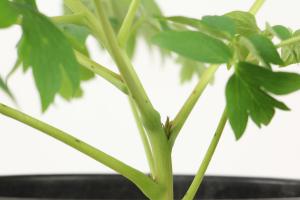Introduction
Apricot trees are deciduous trees that are popular for their beautiful pink or white blossoms in the spring and their delicious fruits in the summer. However, before planting an apricot tree, it is important to know where to plant it to ensure optimal growth and a bountiful harvest. In this article, we will discuss the ideal planting conditions for apricot trees.
Climate
Apricot trees prefer warm and dry climates with plenty of sunshine. They are native to the Mediterranean region, but can also thrive in areas with similar climates, such as California, Texas, and parts of the southern United States. In areas with harsh winters, it is best to plant apricot trees in a sheltered location to protect them from cold winds and frost damage.
Soil
Apricot trees require well-draining soil with a pH level between 6.0 to 7.5. They do not thrive in soils that are too acidic or alkaline. To ensure proper drainage, it is recommended to plant apricot trees on raised beds. Moreover, it is important to avoid planting apricot trees in areas with compacted soil or clay, which can limit root growth and lead to waterlogging.
Sunlight
Apricot trees need plenty of sunlight to produce healthy fruits. They require at least six hours of direct sunlight per day, preferably in the morning when the sun is not too hot. Therefore, it is important to choose a planting location that receives full sun exposure and is not shaded by tall buildings or trees.
Water
Apricot trees require regular watering, especially during the first few years of growth. They need about 1 inch of water per week, either from rainfall or irrigation. However, it is important not to overwater apricot trees, as this can lead to root rot and other fungal diseases. To prevent waterlogging, it is recommended to plant apricot trees on raised beds or slopes.
Spacing
Apricot trees need adequate space to grow and develop a strong root system. The recommended spacing for apricot trees depends on the cultivar and the rootstock used. In general, standard-sized apricot trees should be planted at least 12-15 feet apart, while semi-dwarf trees can be planted 8-10 feet apart. Moreover, it is important to prune apricot trees regularly to maintain their shape and promote fruit production.
Pest and Disease Control
Apricot trees are susceptible to various pests and diseases, such as aphids, mites, scale, borers, and bacterial canker. To prevent infestations and infections, it is important to maintain proper tree care practices, such as pruning, fertilizing, and controlling weeds. Moreover, it is recommended to use organic or natural pest and disease control methods, such as insecticidal soaps, neem oil, and beneficial insects, instead of harsh chemicals that can harm the environment and beneficial insects.
Conclusion
Planting apricot trees requires careful consideration of the planting location, soil quality, sunlight exposure, water requirements, spacing, and pest and disease control. By following these guidelines, you can ensure that your apricot trees will thrive and produce delicious fruits for many years to come.

 how many times do yo...
how many times do yo... how many planted tre...
how many planted tre... how many pine trees ...
how many pine trees ... how many pecan trees...
how many pecan trees... how many plants comp...
how many plants comp... how many plants can ...
how many plants can ... how many plants and ...
how many plants and ... how many pepper plan...
how many pepper plan...































